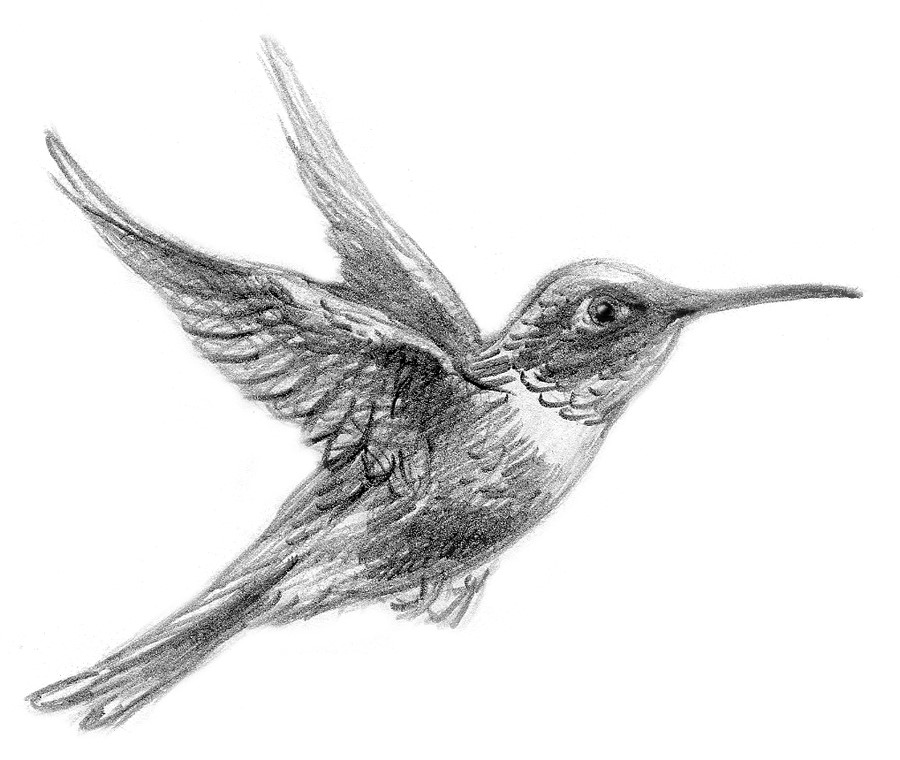June, Jewels
Text and Illustration by Leslie Watkins

June 1 is an important date in the Icebox of Connecticut for two reasons. It means that the danger of frost is past and it’s safe to set out tender plantings. It’s also a time that welcomes the return of one of our most beloved garden visitors, the ruby-throated hummingbird. Few creatures astonish and delight us as they do. Their dazzling display of dexterity, speed and iridescence energizes our gardens with its miraculous beauty.
There are 360 different species of hummingbirds, all in the New World. Outside of the Americas, hummingbirds exist only in zoos and collections. In New England we have just one kind, the ruby-throated hummingbird, Archilochus colubris. With its spectacular ruby red gorget and its tiny emerald green body, it truly is a flying jewel. These tiniest of birds weigh less than a nickel and beat their wings 60-80 times per second.
The birds migrate each year from as far as Central America to Canada and New England where they mate and typically lay two half-inch eggs barely bigger than a pea. The nests are the size of walnuts and made of spiderwebs and lichens. The stretchy spiderwebs allows the nest to expand as the babies grow. They’re built on branches about 10-40 feet high and lined with thistle or dandelion down. It takes the females about 10 days to build them.
Hummingbird feeders can be located near the house to provide good viewing, but it’s important to note that many hummers die from window crashes and outdoor cats. It’s best to place the feeders high and away from windows, preferably in the shade. Another deadly problem comes from dirty sugar water and feeders. The microorganisms that cause the water to ferment come from contaminated beaks. The bacteria cause the bird’s tongues to swell, and starvation follows. They can also be transmitted to the babies during feeding. Feeders need cleaning 2-3 times a week. They should scrubbed thoroughly with a brush and hot water, then refilled with fresh sugar water. The recipe is one part white cane sugar to four parts water.
Hummingbirds also eat mosquitoes, gnats, spiders and aphids. You can attract hummingbirds to your yard by providing cover with lookout perches and native plantings. They are especially attracted to tubular red flowers. We have plenty to choose from for our gardens, both native and ornamental.
Hummingbird Flowers
- Scarlet sage, Salvia splendens
- Beardtongue, Penstemon
- Daylily, Hemerocallis
- Foxglove, Digitalis
- Petunia, Petunia
- Spotted jewelweed, Impatiens capensis
- Cardinal flower, Lobelia cardinalis
- Scarlet bee-balm, Monarda didyma
- Coral honeysuckle, Lonicera sempervirens
- Red columbine, Aquilegia canadensis
